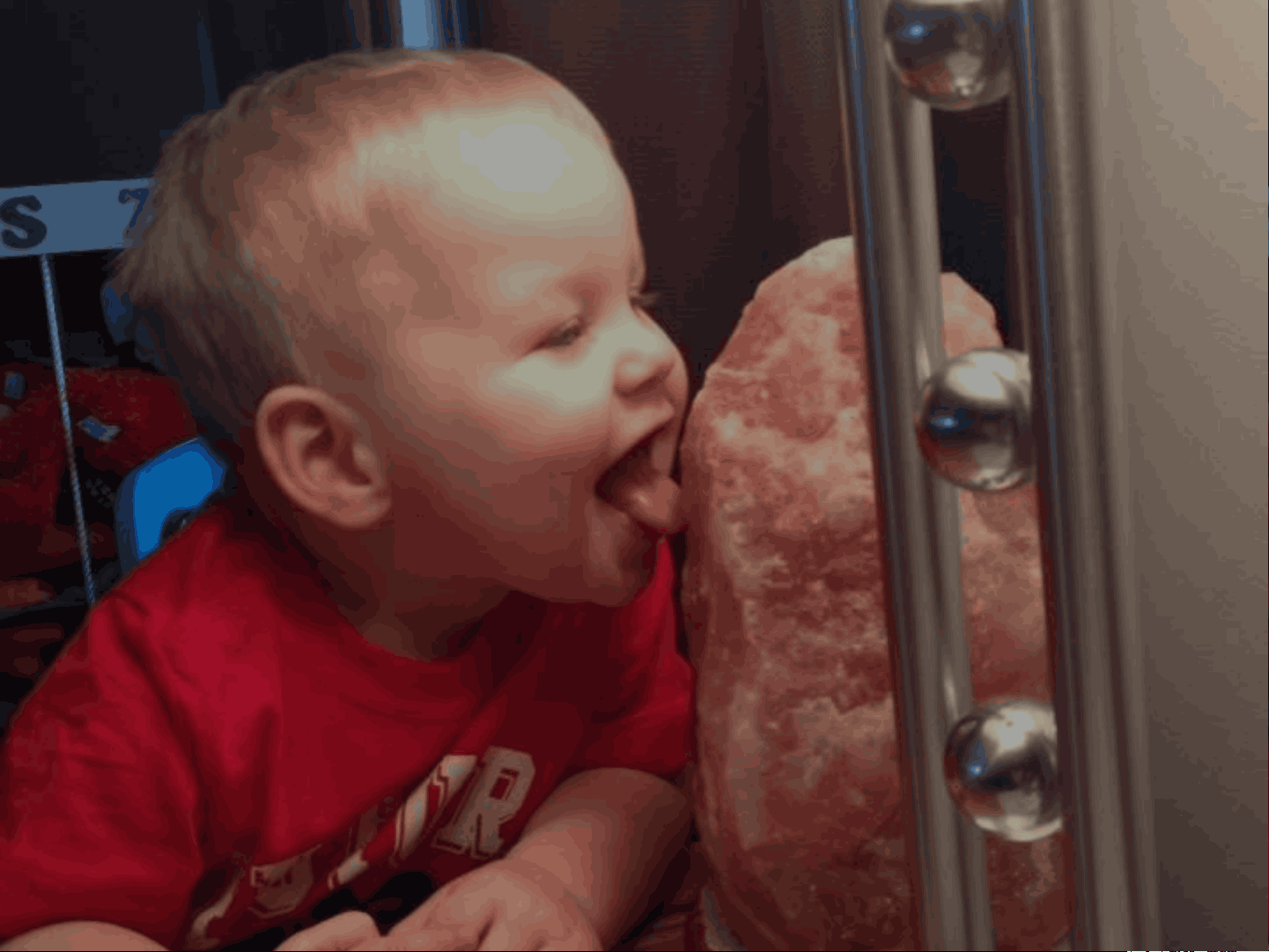
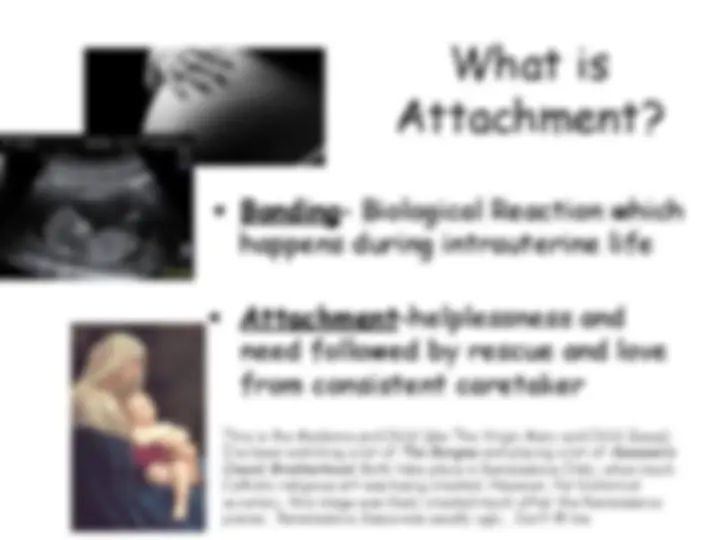
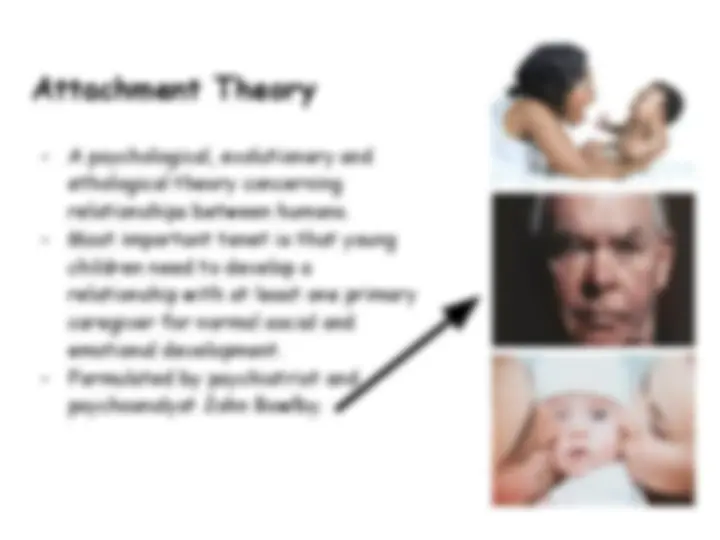
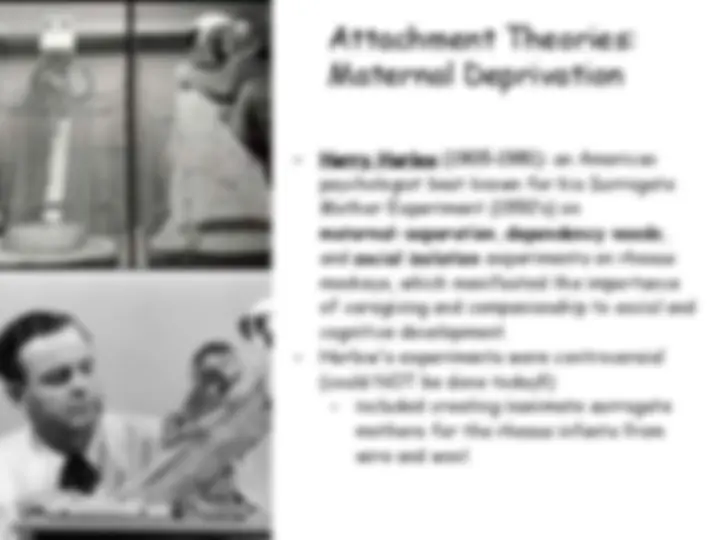
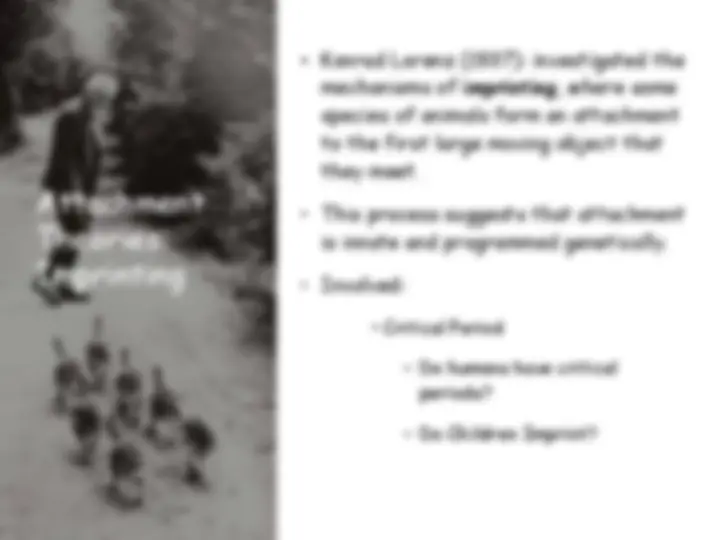
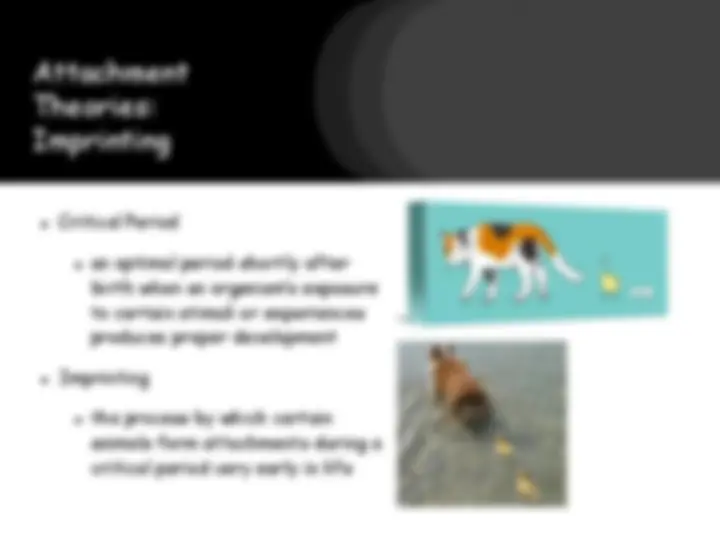
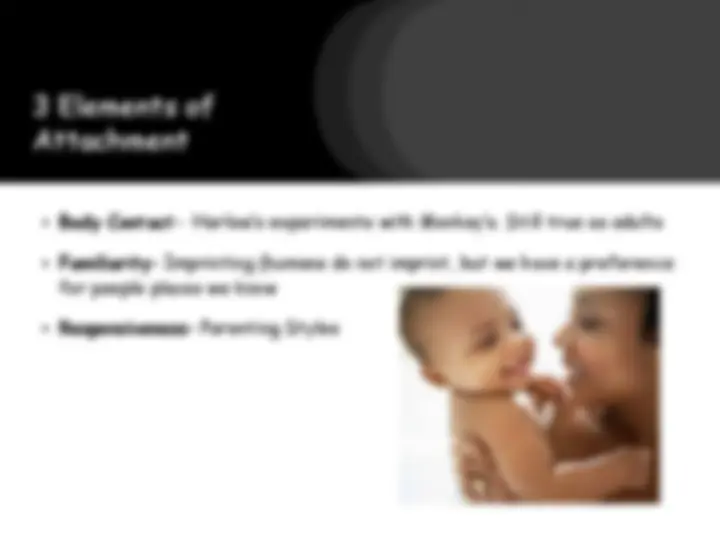
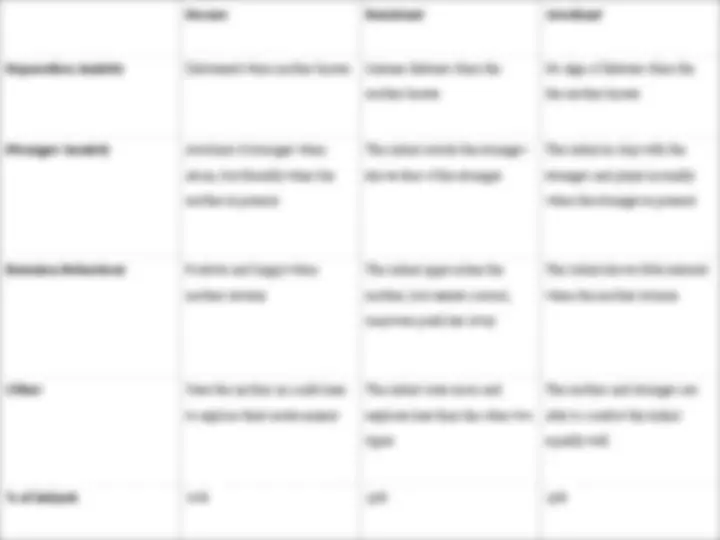
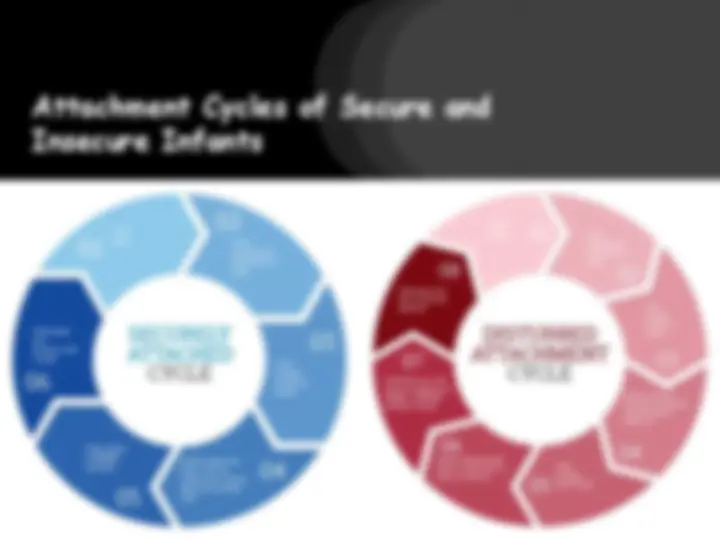

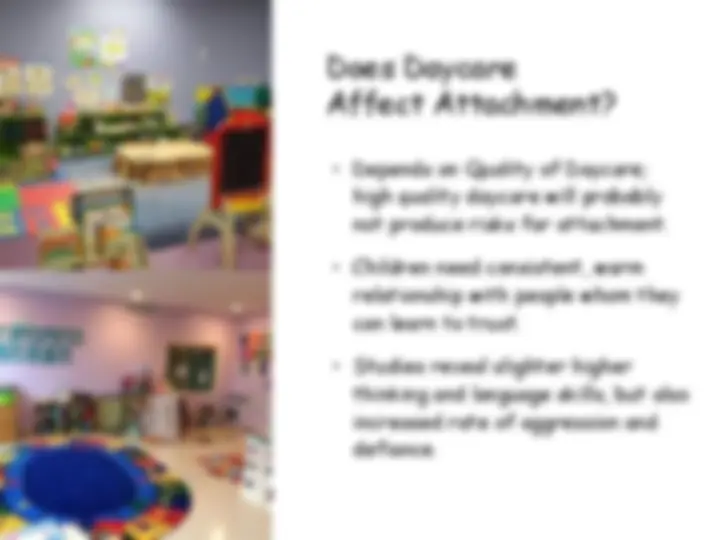
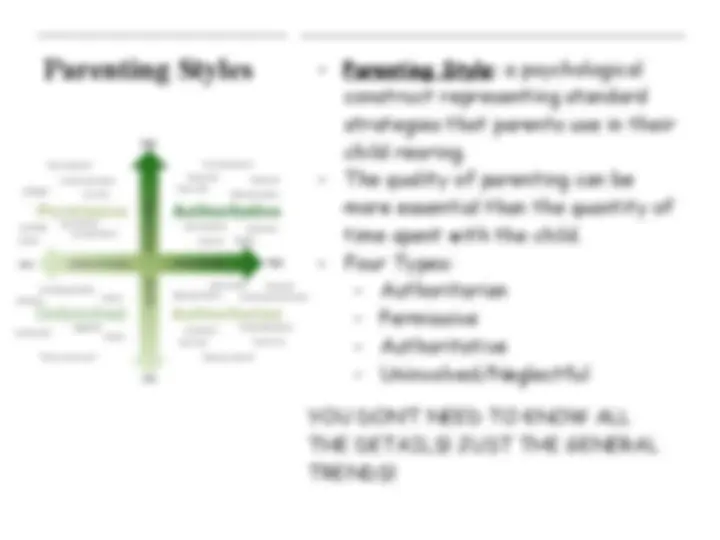

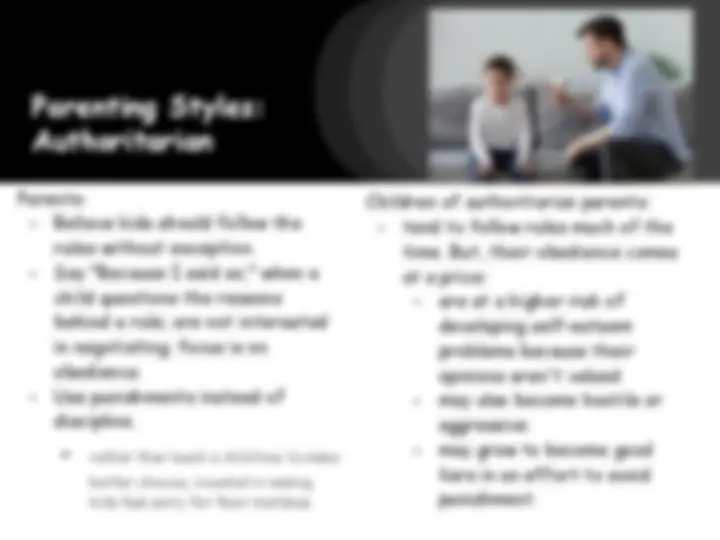
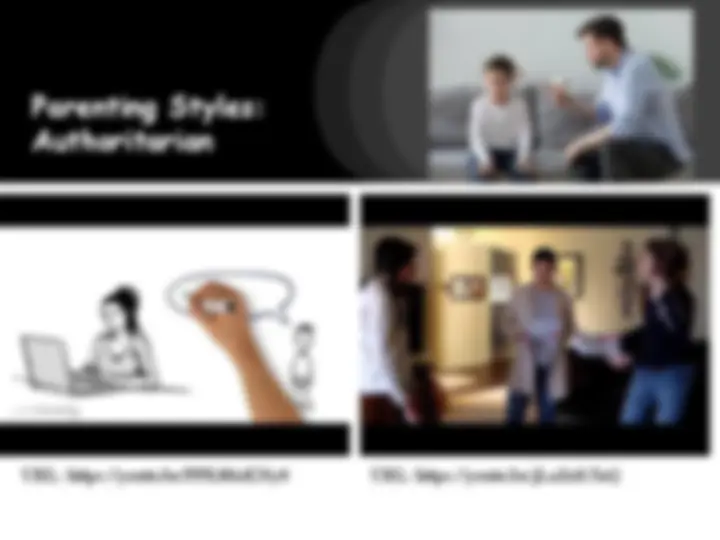
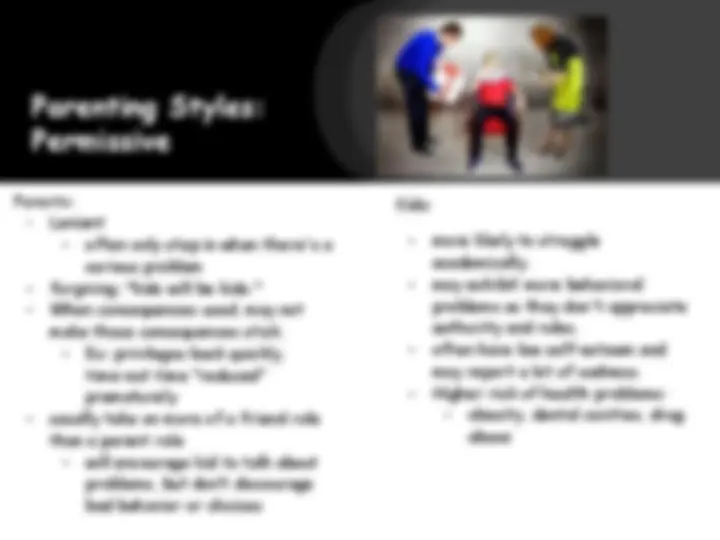
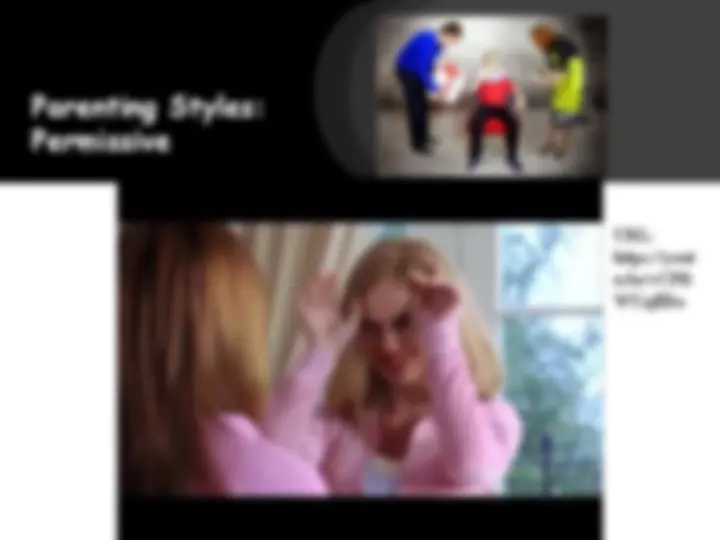
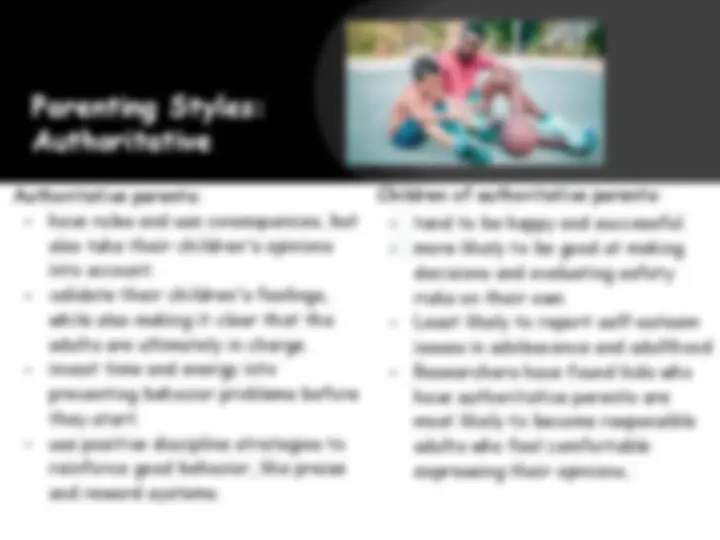
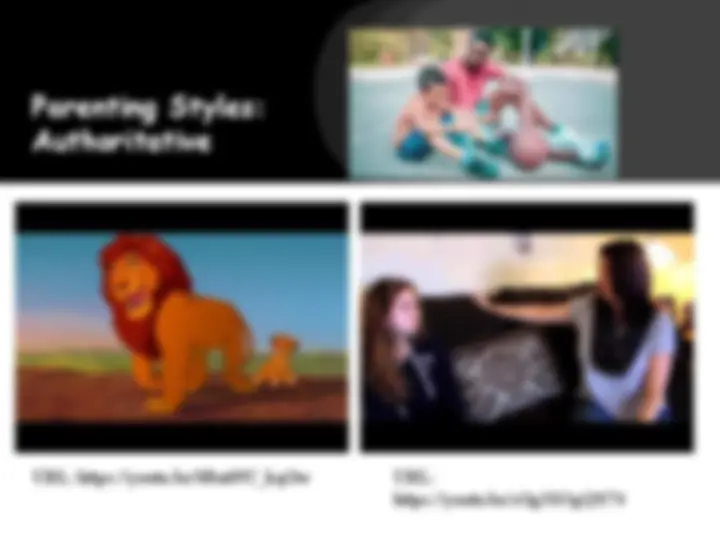

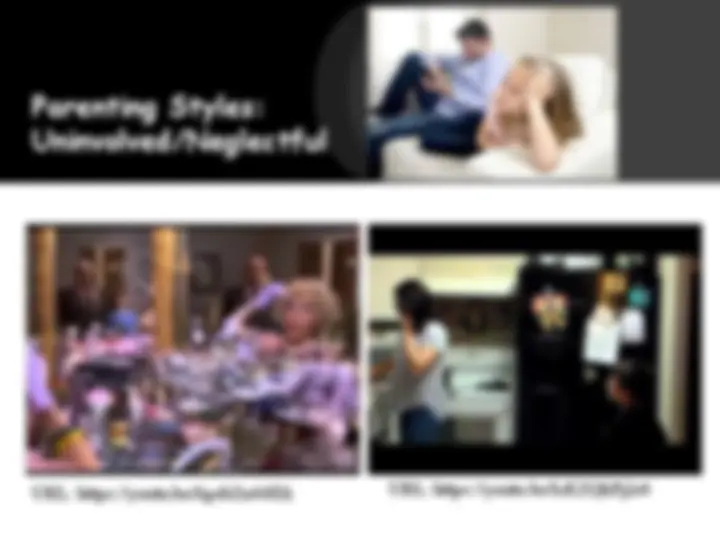
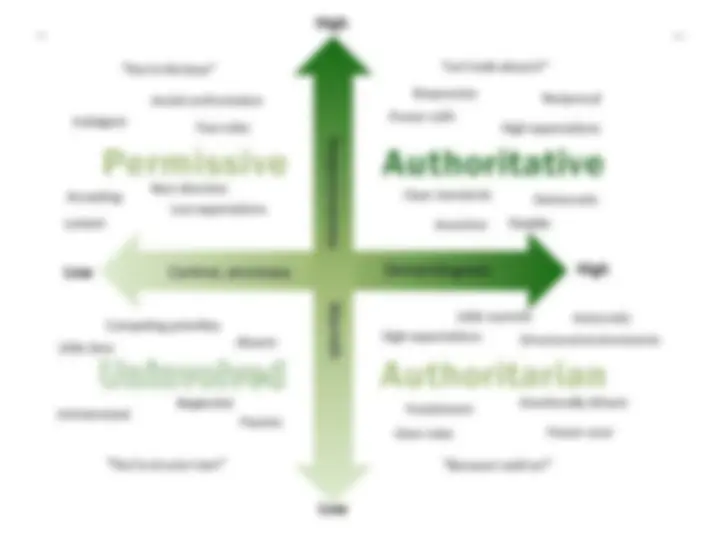



Study with the several resources on Docsity

Earn points by helping other students or get them with a premium plan


Prepare for your exams
Study with the several resources on Docsity

Earn points to download
Earn points by helping other students or get them with a premium plan
Community
Ask the community for help and clear up your study doubts
Discover the best universities in your country according to Docsity users
Free resources
Download our free guides on studying techniques, anxiety management strategies, and thesis advice from Docsity tutors
The concept of attachment theory, a psychological, evolutionary, and ethological theory concerning relationships between humans. The theory emphasizes the importance of young children developing a relationship with a primary caregiver for normal social and emotional development. various attachment theories, including Harlow's Surrogate Mother Experiments, Imprinting, and Mary Ainsworth's Strange Situation Procedure. It also discusses the three types of attachment identified by Ainsworth and the consequences of attachment disorders.
What you will learn
Typology: Slides
1 / 30

This page cannot be seen from the preview
Don't miss anything!























Attachment Theory
Attachment Theories: Maternal Deprivation
Harlow’s
Surrogate Mother
Experiments:
Findings
Attachment
Theories:
Imprinting
3 Elements of
Attachment
- Body Contact- Harlow’s experiments with Monkey’s. Still true as adults - Familiarity - Imprinting (humans do not imprint, but we have a preference for people places we know - Responsiveness - Parenting Styles
Types of Attachment:
Mary Ainsworth’s
Strange Situation
Mary Ainsworth (1931-1999): an American-Canadian developmental psychologist known for her work in the development of the attachment theory.
Video of her “Strange Situation” experiment URL: https://youtu.be/QTsewNrHUHU
Secure Resistant Avoidant
Separation Anxiety Distressed when mother leaves Intense distress when the mother leaves
No sign of distress when the the mother leaves
Stranger Anxiety Avoidant of stranger when alone, but friendly when the mother is present
The infant avoids the stranger - shows fear of the stranger
The infant is okay with the stranger and plays normally when the stranger is present
Reunion Behaviour Positive and happy when mother returns
The infant approaches the mother, but resists contact, may even push her away
The Infant shows little interest when the mother returns
Other Uses the mother as a safe base to explore their environment
The infant cries more and explores less than the other two types
The mother and stranger are able to comfort the infant equally well
% of infants 70% 15% 15%
Attachment Cycles of Secure and
Insecure Infants
URL: https://youtu.be/VCeWr8OFuEs
Parenting Styles -^ Parenting Style : a psychological construct representing standard strategies that parents use in their child rearing.
YOU DON’T NEED TO KNOW ALL THE DETAILS! JUST THE GENERAL TRENDS!
Take A Parenting
Style Quiz!
Take one of the quizzes below to determine what type of parent you could become! PsychCentral